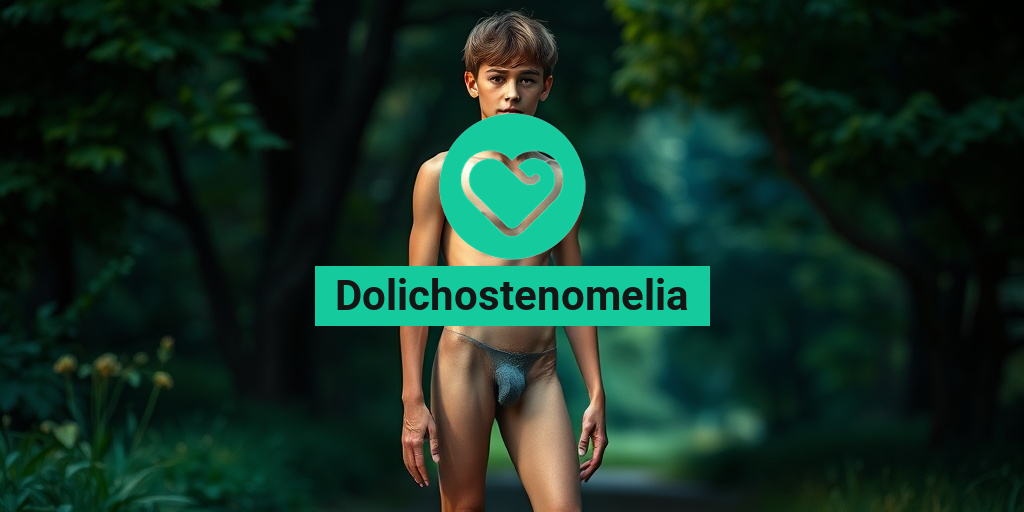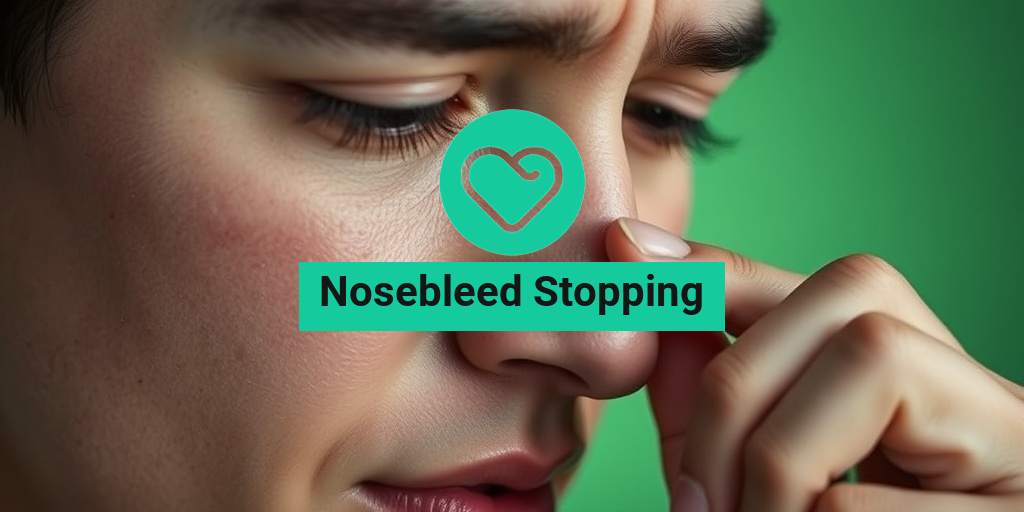What Is Dolichostenomelia?
Dolichostenomelia is a rare genetic condition characterized by an abnormal elongation of the limbs, particularly the arms and legs. The term itself is derived from Greek, where “dolichos” means long and “stenos” means narrow. This condition can lead to a distinctive body shape, often described as having disproportionately long limbs compared to the torso. While dolichostenomelia can occur as an isolated condition, it is frequently associated with other genetic disorders, such as Marfan syndrome and arachnodactyly.
Individuals with dolichostenomelia may exhibit a range of physical features, including long fingers and toes, which can sometimes lead to confusion with other conditions. Understanding dolichostenomelia is crucial for accurate diagnosis and management, especially since it can impact various aspects of health and well-being.
Causes of Dolichostenomelia
The primary cause of dolichostenomelia is genetic mutations that affect the connective tissues in the body. These mutations can lead to abnormalities in the structure and function of collagen, a protein that provides strength and elasticity to tissues. In many cases, dolichostenomelia is inherited in an autosomal dominant pattern, meaning only one copy of the mutated gene from an affected parent can cause the condition in their offspring.
In addition to genetic factors, environmental influences during pregnancy, such as exposure to certain medications or toxins, may also play a role in the development of dolichostenomelia. However, more research is needed to fully understand these potential links.
Dolichostenomelia Symptoms
The symptoms of dolichostenomelia can vary widely among individuals, but they typically include:
- Long limbs: The most defining characteristic of dolichostenomelia is the disproportionate length of the arms and legs.
- Long fingers and toes: Individuals may have elongated digits, which can be a hallmark of the condition.
- Joint hypermobility: Many people with dolichostenomelia experience increased flexibility in their joints, which can lead to joint pain or instability.
- Postural issues: The elongated limbs can sometimes result in postural abnormalities, such as scoliosis or lordosis.
- Cardiovascular complications: In cases where dolichostenomelia is associated with Marfan syndrome, individuals may face increased risks of heart and blood vessel issues.
Recognizing the Symptoms
Recognizing the symptoms of dolichostenomelia early on is essential for effective management. Parents and caregivers should be vigilant for signs of disproportionate limb growth in children. If you notice that your child has unusually long arms or legs compared to their body, it may be worth consulting a healthcare professional for further evaluation.
When to Seek Medical Advice
If you or someone you know exhibits symptoms of dolichostenomelia, it is important to seek medical advice. A healthcare provider can perform a thorough assessment, including a physical examination and genetic testing if necessary. Early diagnosis can help in managing potential complications and improving quality of life.
For those seeking more information about dolichostenomelia and related conditions, resources like Yesil Health AI (yesilhealth.com) can provide evidence-based answers and guidance tailored to individual health needs.
In conclusion, dolichostenomelia is a complex condition that requires careful consideration and management. By understanding its symptoms and seeking appropriate medical advice, individuals can navigate the challenges associated with this condition more effectively. 🌟

Dolichostenomelia Causes
Dolichostenomelia is a rare condition characterized by an abnormal elongation of the limbs, particularly the arms and legs. Understanding the causes of this condition is crucial for effective diagnosis and management. While the exact etiology of dolichostenomelia is not fully understood, several factors have been identified that may contribute to its development.
Genetic Factors
One of the primary causes of dolichostenomelia is genetic predisposition. This condition can be associated with various genetic syndromes, including:
- Marfan Syndrome: A connective tissue disorder that often leads to elongated limbs and fingers.
- Ehlers-Danlos Syndrome: Another connective tissue disorder that can result in similar skeletal features.
- Other Genetic Mutations: Specific mutations in genes responsible for growth and development may also play a role.
Individuals with a family history of these conditions may be at a higher risk of developing dolichostenomelia. Genetic counseling can be beneficial for families with a history of such disorders.
Environmental Influences
While genetics plays a significant role, environmental factors may also contribute to the development of dolichostenomelia. These can include:
- Maternal Health: Conditions during pregnancy, such as nutritional deficiencies or exposure to certain medications, may impact fetal development.
- Hormonal Imbalances: Hormonal factors during critical growth periods can influence limb length and proportions.
Research is ongoing to better understand how these environmental factors interact with genetic predispositions to cause dolichostenomelia.
Associated Conditions
Dolichostenomelia is often seen in conjunction with other medical conditions. Understanding these associations can help in identifying the underlying causes:
- Arachnodactyly: This condition, characterized by long, slender fingers, is frequently compared to dolichostenomelia. While they share similarities, they are distinct conditions.
- Other Skeletal Dysplasias: Various skeletal disorders may present with similar features, complicating the diagnosis.
Recognizing these associated conditions is essential for a comprehensive understanding of dolichostenomelia and its implications for affected individuals.
Dolichostenomelia Diagnosis
Diagnosing dolichostenomelia involves a combination of clinical evaluation, family history assessment, and advanced imaging techniques. Early diagnosis is crucial for managing the condition effectively and addressing any associated health issues.
Clinical Evaluation
The first step in diagnosing dolichostenomelia is a thorough clinical evaluation by a healthcare professional. This typically includes:
- Physical Examination: The doctor will assess limb proportions, looking for signs of elongation in the arms and legs.
- Medical History: Gathering information about the patient’s family history and any symptoms they may be experiencing.
During the physical examination, the healthcare provider may also look for other features associated with genetic syndromes, such as hypermobility or cardiovascular issues.
Imaging Techniques
To confirm the diagnosis, imaging studies may be necessary. Commonly used techniques include:
- X-rays: These can help visualize bone structure and proportions, aiding in the assessment of limb length.
- Genetic Testing: If a genetic syndrome is suspected, specific tests can identify mutations associated with dolichostenomelia.
These imaging techniques provide valuable information that can help differentiate dolichostenomelia from other conditions with similar presentations.
Referral to Specialists
In some cases, a referral to a specialist may be necessary for a comprehensive evaluation. Specialists may include:
- Geneticists: For genetic counseling and testing.
- Orthopedic Surgeons: To assess any skeletal abnormalities and discuss potential interventions.
Collaboration among healthcare providers ensures a holistic approach to diagnosis and management, addressing both the physical and emotional needs of individuals with dolichostenomelia.

Dolichostenomelia Treatment Options
Dolichostenomelia is a rare condition characterized by abnormally long limbs and fingers, often associated with other syndromes such as Marfan syndrome. Understanding the treatment options available is crucial for managing this condition effectively. While there is no one-size-fits-all solution, various approaches can help improve the quality of life for individuals affected by dolichostenomelia.
1. Medical Management
Medical management of dolichostenomelia typically involves a multidisciplinary approach. This may include:
- Regular Monitoring: Regular check-ups with healthcare providers are essential to monitor growth patterns and any associated complications.
- Pain Management: Some individuals may experience joint pain or discomfort due to their elongated limbs. Pain management strategies, including medications and physical therapy, can be beneficial.
- Genetic Counseling: Since dolichostenomelia can be associated with genetic conditions, consulting a genetic counselor can provide valuable insights into the condition and its implications for family planning.
2. Surgical Interventions
In certain cases, surgical options may be considered to address specific issues related to dolichostenomelia:
- Lengthening Procedures: Surgical limb lengthening can be performed to correct disproportionate limb lengths, although this is a complex procedure that requires careful consideration.
- Joint Stabilization: If joint instability is a concern, surgical interventions may be necessary to stabilize joints and improve function.
3. Physical Therapy and Rehabilitation
Physical therapy plays a vital role in the treatment of dolichostenomelia. A tailored rehabilitation program can help:
- Improve Mobility: Targeted exercises can enhance flexibility and strength, promoting better mobility.
- Enhance Coordination: Therapy can also focus on improving coordination and balance, which may be affected due to limb length discrepancies.
Dolichostenomelia Management Strategies
Managing dolichostenomelia effectively requires a comprehensive strategy that encompasses various aspects of health and well-being. Here are some key management strategies:
1. Lifestyle Modifications
Adopting certain lifestyle changes can significantly impact the quality of life for individuals with dolichostenomelia:
- Ergonomic Adjustments: Making ergonomic adjustments at home and work can help reduce strain on the body. This includes using supportive furniture and tools designed for comfort.
- Regular Exercise: Engaging in low-impact exercises, such as swimming or cycling, can help maintain fitness without putting excessive stress on the joints.
2. Psychological Support
Living with dolichostenomelia can sometimes lead to emotional challenges. Therefore, psychological support is essential:
- Counseling: Seeking counseling or therapy can help individuals cope with any emotional or psychological issues related to their condition.
- Support Groups: Joining support groups can provide a sense of community and understanding, allowing individuals to share experiences and coping strategies.
3. Education and Awareness
Educating both the individual and their family about dolichostenomelia is crucial:
- Understanding the Condition: Knowledge about dolichostenomelia, its implications, and treatment options can empower individuals to make informed decisions regarding their health.
- Awareness in Schools: For children with dolichostenomelia, raising awareness in schools can foster a more inclusive environment and reduce instances of bullying or misunderstanding.
In conclusion, while dolichostenomelia presents unique challenges, a combination of medical management, lifestyle modifications, and psychological support can significantly enhance the quality of life for those affected. By understanding the treatment options and management strategies available, individuals can navigate their journey with greater confidence and resilience. 🌟

Dolichostenomelia and Associated Conditions
Dolichostenomelia is a rare genetic condition characterized by an abnormal elongation of the limbs, particularly the fingers and toes. This condition can often be associated with other syndromes and health issues, making it essential to understand its implications fully. In this section, we will explore the various conditions that may be linked to dolichostenomelia, including Marfan syndrome and arachnodactyly.
Understanding Dolichostenomelia
The term dolichostenomelia comes from Greek roots, where “dolichos” means long and “stenos” means narrow. Individuals with this condition typically exhibit disproportionately long limbs compared to their torso. This characteristic can lead to various physical challenges and may affect an individual’s overall health and well-being.
Associated Conditions
Dolichostenomelia does not occur in isolation; it is often seen in conjunction with other medical conditions. Here are some of the most notable associations:
- Marfan Syndrome: This genetic disorder affects connective tissue and is characterized by features such as tall stature, long limbs, and arachnodactyly (long, slender fingers). Individuals with Marfan syndrome may also experience cardiovascular issues, making early diagnosis and management crucial.
- Arachnodactyly: Often seen in conjunction with dolichostenomelia, arachnodactyly refers to the long, spider-like fingers and toes. While it can occur independently, it is frequently a feature of Marfan syndrome.
- Ehlers-Danlos Syndrome: This group of disorders affects connective tissues and can lead to hypermobility, skin elasticity, and other symptoms. Some individuals with dolichostenomelia may also exhibit signs of Ehlers-Danlos syndrome.
- Other Skeletal Dysplasias: Dolichostenomelia can be part of a broader category of skeletal dysplasias, which are disorders affecting bone and cartilage development.
Understanding these associations is vital for healthcare providers and families, as they can help in early diagnosis and intervention, improving the quality of life for those affected.
Dolichostenomelia Outlook and Prognosis
The outlook for individuals with dolichostenomelia can vary significantly based on the presence of associated conditions and the severity of the symptoms. While the condition itself primarily affects limb proportions, the related health issues can have a more profound impact on overall health.
Factors Influencing Prognosis
Several factors can influence the prognosis for individuals with dolichostenomelia:
- Severity of Associated Conditions: The presence of conditions like Marfan syndrome can complicate the prognosis. For instance, cardiovascular issues associated with Marfan syndrome can pose significant health risks.
- Early Diagnosis and Management: Early identification of dolichostenomelia and any associated conditions can lead to timely interventions, which can improve outcomes. Regular monitoring and management of related health issues are crucial.
- Individual Health Factors: Each person’s health status, including their overall fitness and any other medical conditions, will play a role in their prognosis.
Living with Dolichostenomelia
For many individuals with dolichostenomelia, living a fulfilling life is entirely possible. With appropriate medical care, physical therapy, and support, individuals can manage their symptoms effectively. Here are some tips for enhancing quality of life:
- Regular Check-ups: Routine visits to healthcare providers can help monitor any changes in health and address potential complications early.
- Physical Therapy: Engaging in physical therapy can improve mobility and strength, helping individuals adapt to their unique body structure.
- Support Groups: Connecting with others who have similar experiences can provide emotional support and practical advice.
In conclusion, while dolichostenomelia presents unique challenges, understanding the condition and its associated factors can empower individuals and families to navigate their health journeys effectively. 🌟

Frequently Asked Questions about Dolichostenomelia
What is Dolichostenomelia?
Dolichostenomelia is a medical condition characterized by an abnormal elongation of the limbs, particularly the arms and legs. This condition can be associated with various genetic disorders and may affect an individual’s overall proportions and physical appearance.
What are the symptoms of Dolichostenomelia?
The primary symptom of dolichostenomelia is the disproportionate length of the limbs compared to the trunk. Other symptoms may include:
- Joint hypermobility
- Increased risk of skeletal deformities
- Potential cardiovascular issues
How is Dolichostenomelia diagnosed?
Diagnosis typically involves a physical examination and may include imaging studies such as X-rays. Genetic testing may also be conducted to determine if the condition is associated with other syndromes.
What is the relationship between Dolichostenomelia and Marfan Syndrome?
Dolichostenomelia is often seen in individuals with Marfan Syndrome, a genetic disorder that affects connective tissue. People with Marfan Syndrome may exhibit elongated limbs, making it essential to differentiate between the two conditions.
How does Dolichostenomelia compare to Arachnodactyly?
Arachnodactyly refers specifically to long, slender fingers and toes, which can be a feature of dolichostenomelia. While both conditions involve elongation, dolichostenomelia encompasses a broader range of limb proportions.
Can Dolichostenomelia be treated?
There is no specific treatment for dolichostenomelia itself, but management may involve addressing associated symptoms or complications. Physical therapy and regular monitoring can help improve quality of life.
Is Dolichostenomelia hereditary?
In many cases, dolichostenomelia can be hereditary, particularly when associated with genetic syndromes like Marfan Syndrome. Genetic counseling may be beneficial for affected families.
Where can I find more information about Dolichostenomelia?
For more detailed information, consider consulting medical professionals or reputable health websites that specialize in genetic disorders and skeletal abnormalities.




